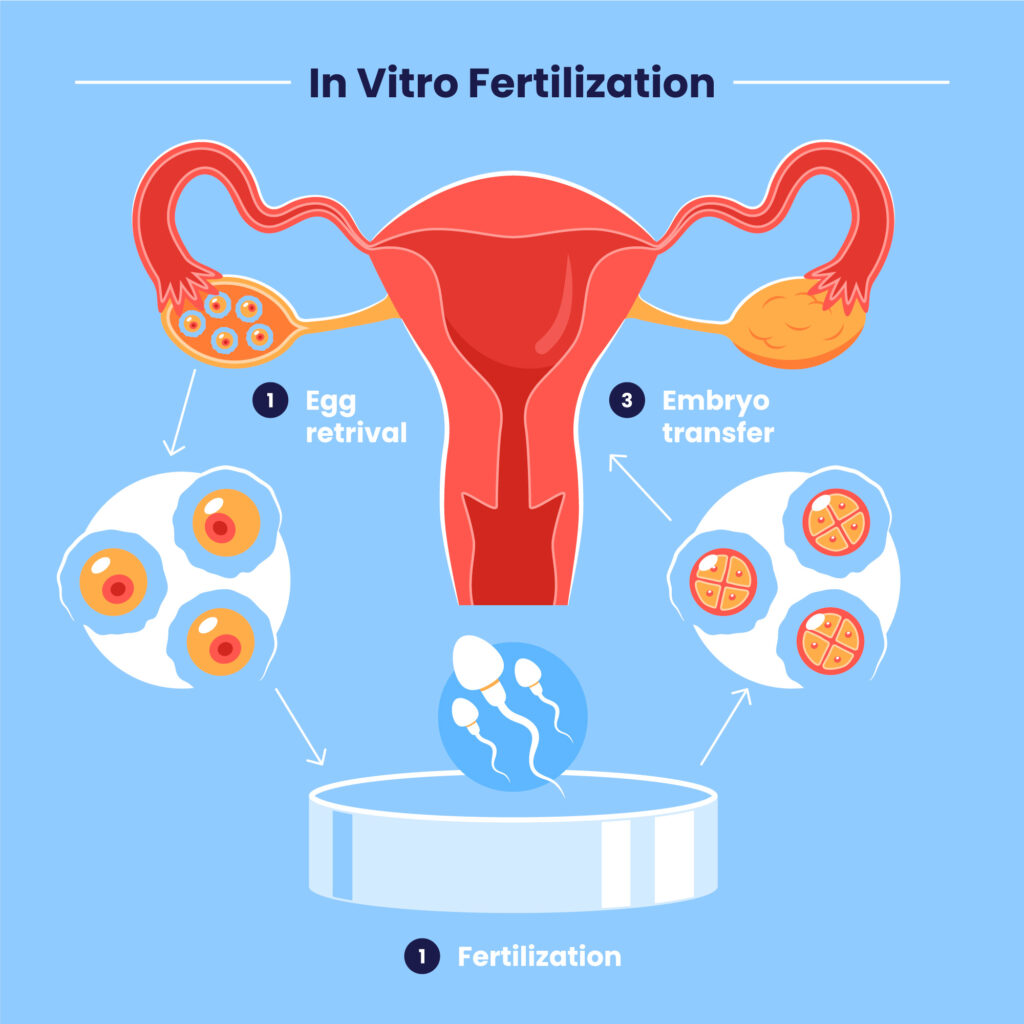
A Concise Overview of the IVF Treatment Process
The procedure of fertilizing an egg with sperm is called in vitro fertilization (IVF), an assisted reproductive technology (ART) performed at the best IVF centre in Delhi NCR. IVF involves fertilizing the woman’s eggs in a laboratory and implanting the resulting embryos into her uterus to achieve a successful pregnancy. A human egg is extracted from a woman’s ovaries, fertilized in an IVF lab, and then cultured into an embryo.
The role of the fallopian tube, which is to offer a location for fertilization and surroundings suited for the development of the fertilized zygote during its first few days of life, is accomplished in an IVF laboratory. Today, however, this process is referred to as in vitro fertilization, or IVF.
IVF: A Step-by-Step Guide
The following is the step-by-step guide involved in the IVF procedure:
Increase your egg production with the help of superovulation
Stimulation, also known as superovulation according to the National Institutes of Health (NIH), is the process that fertility medicines initiate in you. This means that the medications, including Follicle Stimulating Hormones, will signal your body to generate more than the usual monthly quota of one egg.
A higher egg count increases the likelihood of a successful fertilization cycle. To keep an eye on your ovaries and hormone levels, transvaginal ultrasounds and blood tests will often be administered throughout this IVF phase.
Take the eggs out
You will be given a hormone injection a little over a day before your egg retrieval to speed up the maturation process.
Finally, a simple surgical technique called follicular aspiration will extract the eggs. According to the National Institutes of Health, this is often performed as an outpatient procedure at the best IVF centre in Delhi NCR.
Your doctor will use ultrasonography to direct a small needle into each of your ovaries via your vagina. Then, the eggs are extracted one by one using a suction apparatus linked to the needle.
If you’re worried about the pain, know that you’ll likely be sedated before the procedure begins. Cramps are possible after that, but the NIH says they often go away within a day.
Obtain sperm from a donor or your spouse
The time when your eggs are extracted, your spouse will supply a sperm sample. The use of donor sperm is another option. The sperm are then washed and spun at high speeds to separate the healthy from the unhealthy.
Combine the sperm and eggs
The next step in IVF is the one most people are aware of: mixing your finest sperm and eggs. In this case, it’s called insemination.
Fertilization of an egg by a sperm typically takes many hours. ICSI is another option where the sperm is injected directly into the egg by an experienced doctor like Dr Shivani Sachdev Gour.
Place the embryo(s) into your uterus
You will be prescribed more medicine once your eggs have been harvested. This one is for preparing your uterine lining for the embryos you’ll have transplanted back in.
Embryos are usually implanted into a woman’s uterus by catheter three to five days after conception. This portion of the IVF process performed by infertility doctors in Delhi takes place at your doctor’s office while you’re conscious.
Conclusion
At SCI IVF Hospital, it is hoped that at least one of the several embryos reintroduced into you will successfully attach to the uterine wall and begin to develop. It is not uncommon for IVF mothers to have twins or more than one child. IVF is a scientific method that mimics the process of natural fertilization. The success of the IVF operation may then be confirmed by taking a pregnancy test.
